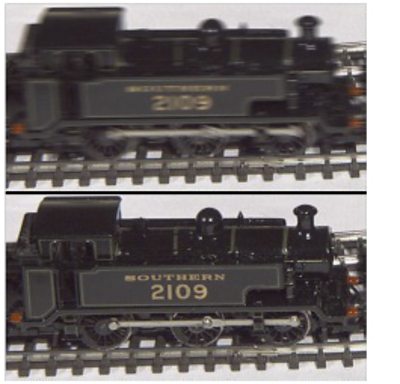
Many of you will already be aware that (UHD) displays will start to appear in shops later this year, and some of you may already have seen them. These new screens have a resolution of 3840x2160 pixels - four times higher than today’s “Full HD” displays. But it’s not all about resolution – many of the UHD TV screens will be big so they’ll fill more of your field of view. Because of that, just like the IMAX cinema, they’ll bring with them a greater sense of reality.
For those who’re not familiar with UHD TV its basic parameter set is defined by the ITU BT.2020 standard. The standard defines two UHD TV profiles – what’s commonly called UHD-1 at 3840x2160 pixels and UHD-2 at 7680x4320 pixels. The UHD-2 format was used for last year’s joint /�鶹Լ�� public during the London 2012 Olympics. However, based on research we conducted back in 2004, current thinking is that the lower resolution UHD-1 format is better suited to domestic screens. That research, published in , shows how the current 1920x1080 HD format is sufficient for the vast majority of viewers with screens of up to around a 60” diagonal. The UHD-1 format really comes into its own on larger screens, or where the viewer is particularly close to the screen.
No doubt some of you will be wondering when broadcasters will be launching UHD TV services to get the best out of these new displays. Well the good news is that at �鶹Լ�� R&D we’re leading or contributing to work in the , , and international standards committees and working with other broadcasters through the , to ensure that UHD TV services can make a real impact when they launch. Each of those standards committees looks after a different part of the television value chain – the ITU specifies the video formats and transmission frequencies; SMPTE specifies the studio infrastructure and MPEG and DVB specify the distribution technologies to the home. My role is to co-ordinate �鶹Լ�� R&D’s input to those committees and to ensure that the standards work together to allow us to deliver the full suite of enhancements that we believe are important to the success of UHDTV. Of course we work closely with �鶹Լ�� Technology, Distribution and Archives as well as �鶹Լ�� Television to ensure that our aspirations are aligned with others in the organisation and that there are no nasty surprises as the technology becomes available.
At �鶹Լ�� R&D, UHD TV is seen as an opportunity for us to do more than just quadruple the resolution. We see it as an opportunity to design a new broadcasting system that’s fit for the future. We want it to deliver a far more immersive audio visual experience and we’d like some of the benefits to also be apparent on smaller screens. So for us and many in our industry, UHD TV is about a range of improvements that together will deliver a much more lifelike experience in the home.
To help build consensus in the industry about what those key improvements should be, the EBU and DVB jointly organised a two day “” in London last month. The workshop was a huge success attracting delegates and speakers from around the world. �鶹Լ�� R&D was a major contributor and presented a range of technical papers covering topics from high frame rate video through to ultra high definition audio – I expect that my colleagues will have more to report on those aspects over the coming months. In my view, however, the workshop would not have been anywhere near as successful without the range of demonstrations that accompanied it. No matter how many technical papers one reads, there’s nothing quite as convincing as seeing the pictures and listening to the audio yourself.
�鶹Լ�� R&D contributed three demonstrations to a wider set laid on by key industry players – high frame rate video, format conversion and (in collaboration with others) 10 bit HEVC video compression.

The �鶹Լ�� pioneered the work on high frame rate television, and some may recall that we reported our early findings in 2008 in . The trains to the left, taken from that report, illustrate how higher frame rates dramatically reduce motion blur which can be particularly disturbing on large modern displays.
For the very first time the workshop gave us the opportunity to demonstrate the benefits of “short shuttered” 100 frames/second (fps) and 150 fps video against standard 50 fps video.The improvements are dramatic. They come close to the 300 fps we were recommending back in 2008, and although still technically challenging, are considerably easier to deploy. We don’t yet know the exact figure that’ll be needed, but we believe higher frame rates should certainly be part of any UHD TV broadcasting standard.
At present ITU BT.2020 specifies a single higher frame rate of 120 fps. So in a second demonstration we explored some of the HD/UHD format conversion issues that European 50 Hz based broadcasters would face if we were to adopt 120 fps as a single worldwide standard for UHD TV. Whilst a single worldwide standard is an admirable goal, without sophisticated and expensive motion compensated format converters, much of the UHD material would appear to “judder” if it were used in HDTV programmes and vice-versa. Thanks in part to the �鶹Լ�� demonstration, there’s now a growing consensus that the 50 Hz community needs a high frame rate standard based on a multiples of 50 fps.
Finally, �鶹Լ�� R&D’s video compression team contributed to a cross-industry demonstration of the benefits of adopting 10 bit video compression for the delivery of UHD signals to the home. Not only would 10 bits address some of the “banding”, “contouring” or “” issues that occur with today’s 8 bits systems, but it paves the way for higher video dynamic range which can add a real “sparkle” to the image and somehow makes the pictures appear more colourful.
We still have a little way to go before all industry players have agreed the key elements that will constitute a UHD television services. But I’m sure I speak for many who attended the workshop when I say that I left with a real sense that we were defining the future of television, and it’s looking very very exciting.
- -
- from the �鶹Լ�� Academy including:
-

Broadcast and Connected Systems section
Broadcast & Connected Systems primarily focuses on how �鶹Լ�� content reaches our viewers through broadcast and Internet delivery. This involves the whole broadcast chain from playout, through coding and distribution to consumption on the end-user's device. Our work typically covers a period from now through to 3 years out from deployment.
